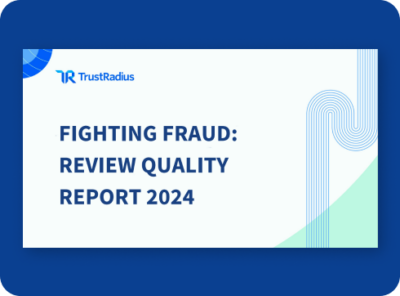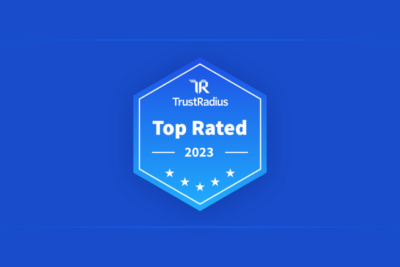
Coupa CMO on the Importance of Customer Voice in a Peer-Bound World
 Chandar Pattabhiram is the CMO of Coupa, a cloud-based spend management platform, and previously led marketing at Marketo and Badgeville. He will be on stage with our founder and CEO Vinay Bhagat, MapD CMO Grant Halloran and Gainsight CCO Allison Pickens at CMO Inflect on Sept. 21 for a session on Accelerating Growth With Your Customer’s Voice. We recently talked to Chandar about his unique perspective on leveraging customers and advocacy to drive marketing results.
Chandar Pattabhiram is the CMO of Coupa, a cloud-based spend management platform, and previously led marketing at Marketo and Badgeville. He will be on stage with our founder and CEO Vinay Bhagat, MapD CMO Grant Halloran and Gainsight CCO Allison Pickens at CMO Inflect on Sept. 21 for a session on Accelerating Growth With Your Customer’s Voice. We recently talked to Chandar about his unique perspective on leveraging customers and advocacy to drive marketing results.
As a marketing leader, how are you adapting to the change in B2B buying behavior?
We used to live in a world where brands talked and people listened. But that’s shifted significantly to a world where people talk and brands listen. In fact, people talk and everybody listens, including buyers and other customers. That’s why I say we’re no longer in an inbound world or outbound world, we’re in a peer-bound world where authenticity is key.
This shift has happened for a couple reasons. First, we know that buyers are independently discovering and researching products more than ever before. The studies show anywhere from 50% to 85% of any buyer’s journey is being self-directed today. And that’s true whether you are buying cars from Toyota or turbo engines from GE or software from Coupa. Second, when buyers are in that self-directed process, they are being influenced by peers more than the brand. Because people trust peer reviews much more than they trust the brand, in B2C as well as B2B.
Customers are so important in this new world, regardless of what product you’re selling. So, from a marketing perspective, voice of the customer is very strategic on a couple of levels. One is at the top of the funnel, where we can use these customer voice initiatives to influence self-directed buyers to make the right decision. But voice of the customer is also important at the bottom of the funnel as a competitive differentiator. It is one thing to say Gartner or Forrester think we’re great, but it’s even more powerful to show that our own customers — real people using our software every day — think we’re much better than the competition.
How do you define authenticity? What are the factors that make a piece of customer voice content authentic?
It is a multidimensional answer. I believe there are layers of authenticity, and you need to think about how all of them come together to build trust with buyers.
The first layer is, truly authentic content doesn’t exclusively live on your own channels. If somebody goes to your website and sees a very slick video saying your product is great, that is expected because it’s your website, but it isn’t very authentic. There are some ugly babies but no mom will say she had them! From an influence perspective, it is much more impactful when a customer talks about how great your product is in a third-party channel.
The second thing is, the perception of authenticity continues through the content itself. Just because something is on a third-party channel, if it feels like the vendor is forcing or bribing a bunch of people to go there and only leave positive feedback, you lose that authenticity. I like that TrustRadius helps buyers figure that out by weighting scores based on whether or not a vendor drove biased reviews.
The third layer of authenticity is the density and quality of that feedback. Depth around why the buyer likes their experience, what the vendor has done to make them happy, plus more detailed feedback about various capabilities — all of that increases authenticity. Remember, your customers have spent so much time getting to know the product, understanding it, living with it. So you want their feedback to be dense and high-quality, as opposed to them just clicking four stars and saying, “I really like it.”
And fourth, the presence of negative feedback can help with authenticity as well. When was the last time everybody loved a software product? Never. More broadly, any independent review is good when it is honest. Because being authentic means being open about your experience, and no piece of technology is perfect. If somebody sees only positive reviews, they know that’s been gamified and influenced by the vendor.
What are some of the ways you’ve successfully used customer voice to impact marketing and sales?
The interesting challenge for us marketers is to bring authenticity into the buying journey, and to do it in a way that works seamlessly for the buyers. The fallacy of the whole omni-channel approach is that a single buyer is going to be in eight different channels. Instead, I call it an opti-channel strategy, because every buyer has two or three channels of choice and they’re only going to engage in those specific channels.
Once you get customers on the record, the next step is leveraging that across all the various channels of choice your buyers are engaging in. For example, if you know that buyers tend to visit a certain part of your site, like the product or pricing pages, add review quotes to those pages. Your own channels can become much more authentic when you add third-party customer voice content.
Marketing needs to help sales leverage authenticity as well. There isn’t a single sales deck I’ve been associated with in the last two years that hasn’t incorporated customer voice, because it really adds value in a way nothing else can. Putting authentic sound bites into your CRM and encouraging reps to share them on a one-on-one basis can be really powerful as well. So think about how you bring those reviews into the discussion at every step in the funnel.
Why do you think some companies struggle to capture and leverage customer voice?
The biggest hurdle companies have in properly running an advocacy and customer voice program is the imbalance of spend in marketing. Today, 87% percent of marketing spend goes towards acquisition. That means only 13% of spend is in customer lifecycle marketing, which includes retention, adoption and advocacy. On one hand, we’re saying it’s a peer-bound world and advocacy is so important. On the other hand, there is a disconnect in the actual allocation of budget.
One thing I did when I got to Marketo was balance the budget more in terms of spending on existing customers. Because one way to make these programs successful is to start acting lifecycle, not just talking lifecycle. Today, a lot of companies talk about needing to invest across lifecycle activities, in advocacy and in customer marketing. But unless you balance the boat more on that, you won’t be able to take full advantage of customer voice initiatives, where you really influence both the customer and the buyer.
Specifically, a lot of companies don’t have the technology or the resources to capture the voice of their customers at scale. It is very important for B2B companies to invest in a program that proactively helps their customers become advocates at the height of delight, as opposed to being reactive about it. At Marketo, we were able to get about 800 customers to socialize their love for the brand in just six months by taking a programmatic approach and leveraging technology like TrustRadius. Thanks to TrustRadius, we doubled our review volume and accelerated review acquisition by 4x, ensuring we acted lifecycle as opposed to talking lifecycle.
One last question. You recently made a big career move. Why did you make the decision to join Coupa?
Ultimately, the most relevant companies today are the ones that are directly associated with how you make money, spend money or maximize the value of your money. My previous company Marketo is mandatory because marketing automation is all about how you make money. On the flipside, Coupa is mandatory because it helps you maximize the value of every dollar you spend as company. Coupa provides a single, unified platform to manage your spend across your procurement, expenses, and invoicing functions. It was very compelling to me that Coupa is in a mandatory category, has some unique competitive advantages compared to the legacy players and also has a tremendous culture. I believe that when you have that combination, and you bring scale into the organization, it can be the next great SaaS company.
Customer voice and advocacy will continue to be a priority for me at Coupa. We’ve already laid the groundwork for voice of the customer initiatives, and we’re going to scale and level up using all the principles I’ve talked about today. We are especially focused on tying all these experiences together across owned and earned channels. Because to me, earned has moved beyond traditional media — earned is now about your customers advocating at scale and having discussions in all those third-party channels. If you can do that, your brand will have a distinct edge when it comes to connecting with buyers.




